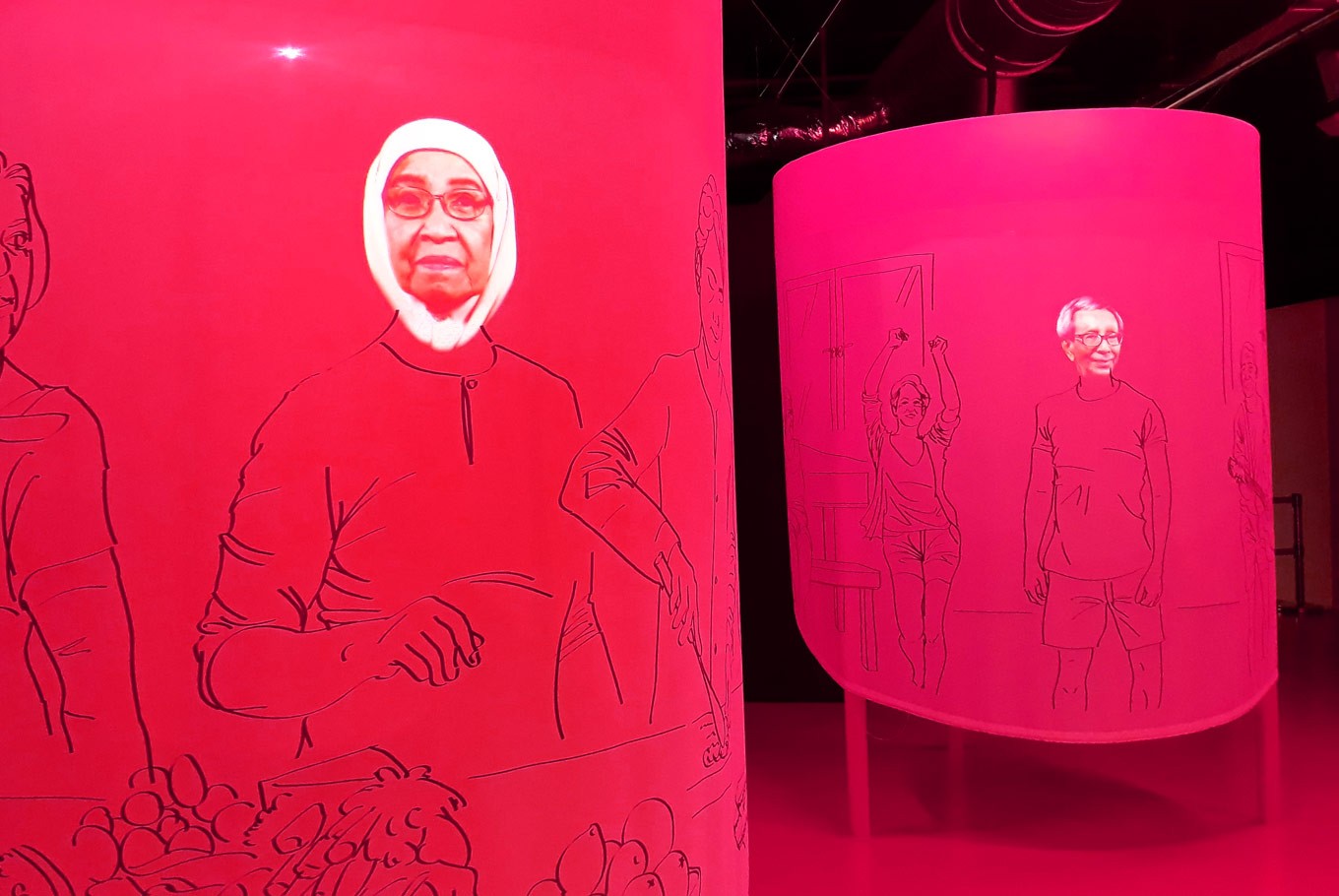Popular Reads
Top Results
Can't find what you're looking for?
View all search resultsPopular Reads
Top Results
Can't find what you're looking for?
View all search resultsDialogue with Time: A personal journey in embracing old age
What sets Dialogue with Time apart from other basic science exhibits is the fully guided tour that turns an otherwise bland learning experience into a very personal and sobering one.
Change text size
Gift Premium Articles
to Anyone
I
picked up the phone, trying to order two tickets for a movie at a local cinema. But the voice was inaudible, and I ended up ordering the wrong tickets. What was a simple task turned into a daunting one, making me feel helpless and frustrated.
Worry not, I can hear just fine. This was just an interactive display at "Dialogue with Time", an exhibit at the Science Centre Singapore (SCS) in cooperation with Singapore's Ministry of Health.
Upon entering the exhibit, visitors can learn about the science behind aging: what happens to our body as we grow old, how aging affects not only the body but also our brain and nervous system and other things one expects to learn from a science exhibition.
Visitors can learn the science of aging at the first zone of the Dialogue with Time exhibit at the Science Centre Singapore. (JP/Devina Heriyanto)
What sets Dialogue with Time apart from other basic science exhibits is the fully guided tour that turns an otherwise bland learning experience into a very personal and sobering one.
Each tour is led by a guide. The guides range from 65 to 85 years old, formerly retired and now working on a part-time basis at the SCS. These are the people who have indeed had a deep-seated conversation with time.
Read also: Secret to reversing aging? Think again
The session began with, of course, a dialogue titled "Ageing is a Personal Matter". My guide, Eddy, told us his life story, showing three pictures that represented the highlights of his adulthood: the first time he owned a car, his wedding and a picture of him at an event at his Buddhist temple — only the latter was in color. Then it was our turn. Eddy asked us to choose among the photographs provided, all showing elderly people in different settings, which we thought best represented how our old, happy self would look.
I chose a picture of an old couple traveling around the world with smiles on their faces. Another chose a picture of an old person surrounded by families. We all had different pictures of what we thought our futures would be. Eddy reassured us that that was OK — aging is, after all, a very personal matter.
Eddy Tan, a guide at the Dialogue with Time exhibit, tells his life story. (JP/Devina Heriyanto)The next game was breaking the stigma against old people. Each one of us held a card, with one side saying "I've never seen an old person who …" and the other side saying various activities. We all had to read it out loud to see whether there was anyone who had ever seen an elderly person that had done the thing mentioned.
The first one said, "I've never seen an old person who reads an e-book." We fell silent. I read e-books, but my late grandmother couldn't even read a text message on a mobile phone. Eddy raised his hand, "I've read e-books. I study Buddhism every day."
Again and again, Eddy would break my long-held stigma that being old would limit our activities. I was so used to the stereotype that I actually dreaded getting old, thinking that if life started only at 40, it might as well end at 50. Meeting Eddy and hearing him talk about life made me rethink my perception of old age.
Read also: Could a lifetime of exercise be the key to slowing down the aging process?
We moved on to the yellow room, where there are several games that allow us to experience what it's like to be old — impaired hearing, decreased muscle strength, trembling hands and so on. Let's just say that if I had tried these several years ago, I wouldn’t have made fun of my grandmother for cranking up the TV volume until we could hear the show from outside the house or for talking so loud on the telephone.
Sharing the same space with the yellow room is the pink room, where visitors can hear stories of the elderly and their activities in their old age. Just like Eddy, these people are the epitome of the adage "age is just a number".
Science can only do so much to help us understand, but Dialogue with Time aims at empathy. With a mix of science, humanities and an actual human touch, the exhibit presents a one-of-a-kind learning process. Not only did we learn the science of aging, we also learned what we can do once we reach old age.
Contrary to Indonesia's burgeoning youth population, Singapore faces an aging society with 14.4 percent of its population aged 65 and older. The ticking “time bomb” is predicted to peak at 2030, when a quarter of Singaporeans will be 65 and older. On the larger scale, Asia will also become the home of most elderly people in the world.
The aging population will have a certain consequence on the economy, not to mention the youth. The exhibit aims to prepare the younger society to care for the older generation, and it begins with a change of perspective on aging. (kes)














